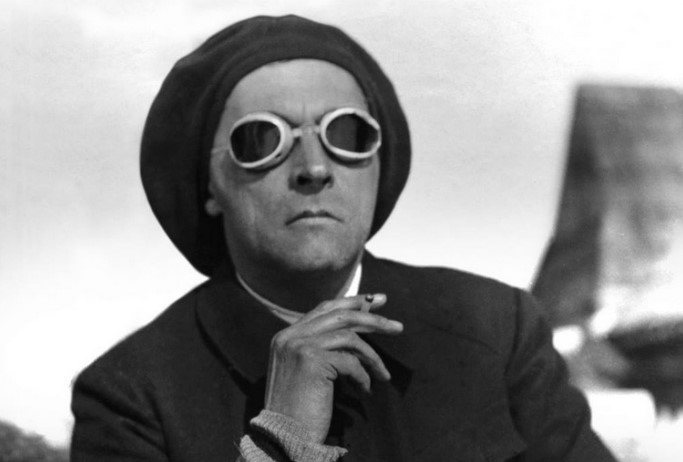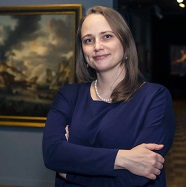By Aleksandra Janiszewska-Cardone (tekst dostępny jest również w języku polskim)
He was one of Poland’s most important, mysterious and controversial artists in the first half of the 20th century – a rebellious writer and experimental painter whose life choices and death at his own hand still arouse extreme emotions today.
Stanisław Ignacy Witkiewicz, alias Witkacy, had a superior intelligence which, combined with his iconoclastic nature, made him a relentless observer of the world he lived in. This remarkable figure is to be remembered at a new exhibition, Witkacy – Seismograph of the Era of Acceleration, opening at the National Museum in Warsaw in July.
Born in Warsaw in 1885, Witkacy spent his childhood among the artistic and intellectual elites of Zakopane. At the turn of the century, this small town at the foot of the Tatra Mountains became a spa resort visited by the wealthy in search of a healthy climate.
This was why his father Stanisław Witkiewicz, himself a renowned artist, decided to move with his family to Zakopane. Witkiewicz senior was fascinated by the highlander folk culture and developed the main tenets of the famous Zakopane style.
Stanisław Jr (aka Witkacy) was born in Warsaw in 1885 when it was part of the Russian Empire. A polymath like his Father with plays & even a film in his repertoire. Witkacy died in September 1939, taking his own life after he learnt of the Soviet invasion 2/2 pic.twitter.com/JcTdnZdkWv
— Chris McBride 🇺🇦 (@McChris85) June 19, 2022
An advocate of free intellectual development, which he thought was damaged by school education, he organised homeschooling for his son where the teachers were well-known artists and academic lecturers. This period shaped Witkacy’s uncompromising attitude, which, as it would later turn out, also applied to the rules of art.
The young Witkiewicz became friends at this time with important figures from artistic and intellectual circles, including Leon Chwistek, a painter and theoretician of formism, and Bronisław Malinowski, later an anthropologist who studied the culture of Melanesia.
Pursuing his own interests and against his father’s will, in 1905 Witkacy attended the Kraków Fine Arts Academy, studying in the ateliers of the artists of Young Poland. His fascination with untamed nature gave rise to his early Tatra landscapes. The artist also tried his hand at portraits – drawings, photographs and paintings – mostly depicting people he knew.
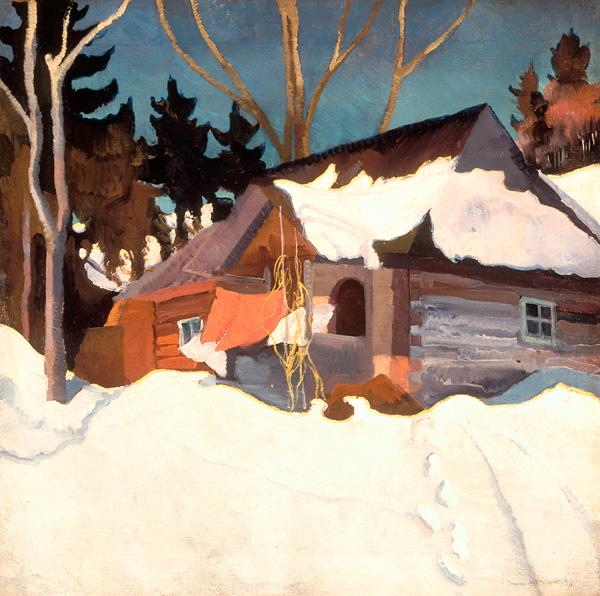
Witkacy, Winter Landscape at Zakopane (Museum of Fine Arts, Szépművészeti, Budapest)
This was also a tempestuous period in Witkacy’s private life. In February 1914, his fiancée, Jadwiga Janczewska, took her own life, for reasons that remain unclear. Devastated by her death, Witkacy decided to travel to Australia on the invitation of his friend Malinowski. Soon after his departure, however, war broke out in Europe, and the artist returned home.
“All this causes me the most frightful suffering and unbearable pain, since she’s no longer alive with me,” he wrote to his father at the time. “Only the worst despair and the senselessness of seeing this beauty. She won’t see this…”
“I wouldn’t wish my worst enemy to go through what I’ve been living through mentally on the ship and what I’m suffering, looking at the inconceivable beauty of the world.”
Witkacy’s uncompromising character, combined with his pessimism regarding both his own life and geopolitical mechanisms, influenced not only the nature of his art, but also his subsequent decisions in life.
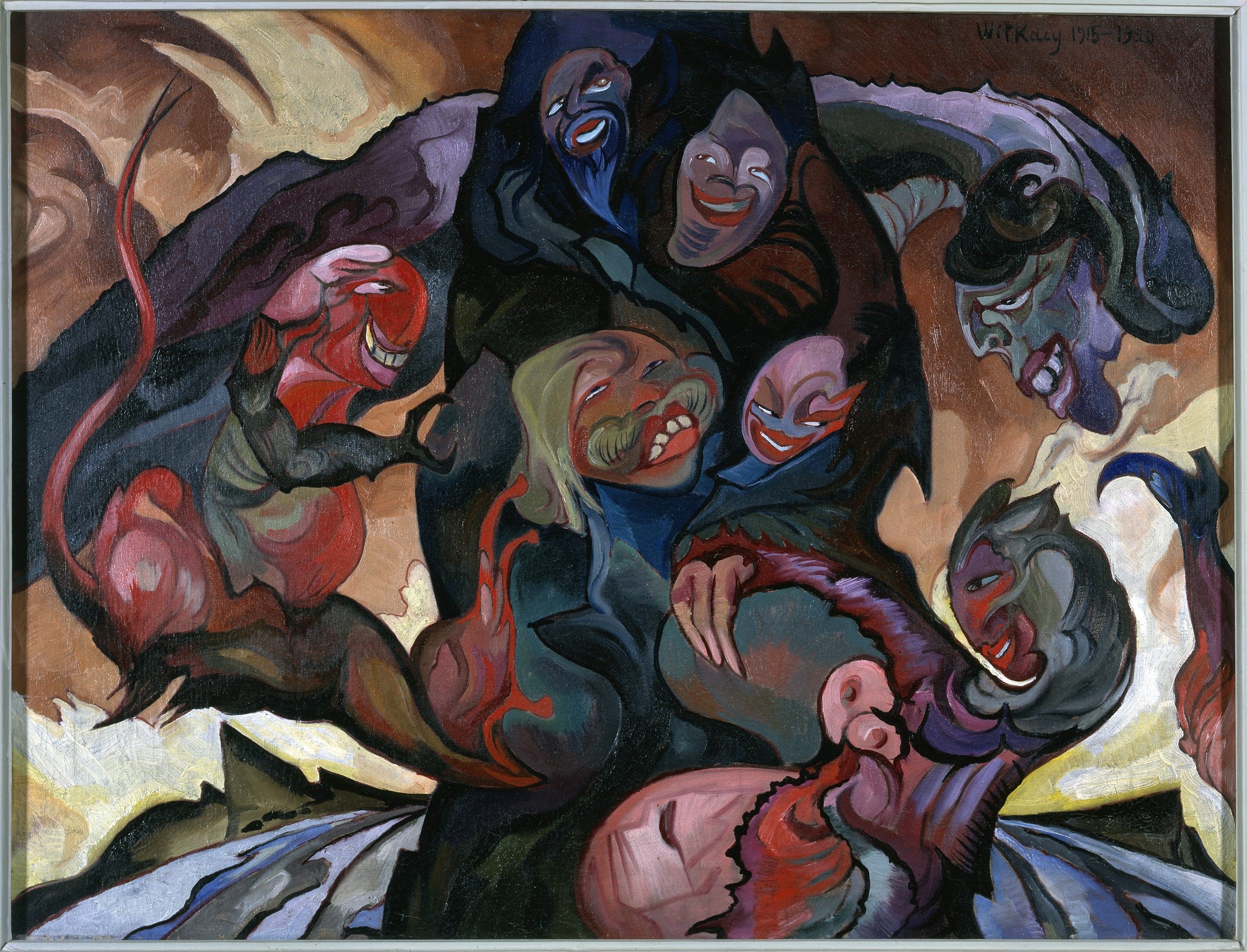
Witkacy, Composition 1922 (National Museum, Kraków)
When the First World War began, he enlisted in the Tsarist army, convinced that only an alliance with the Russian Empire could bring independence to Poland (until 1918, the country was divided into the Prussian, Austrian and Russian partitions). Witkacy became an officer and was an active participant in the war until he was seriously wounded in battle on Stokhid River near Vitonizh (Western Ukraine) in 1916.
During his stay in Russia, he witnessed the outbreak of both the February and the October Revolutions, which led to the Russian Civil War. He supplemented his soldier’s wages by painting portraits.
A work that survives from this time is a photograph taken in a studio in Saint Petersburg between 1914 and 1918. At this time, the artist was serving in the prestigious Pavlovsky Guard Regiment, which is why he is wearing a Tsarist army uniform in Multiple Self-portrait in Mirrors. Witkacy was always keen to search for new means of expression, and in this “souvenir” photograph too he opts for an innovative take. His portrait is reflected in two mirrors, while his true face remains invisible to us.
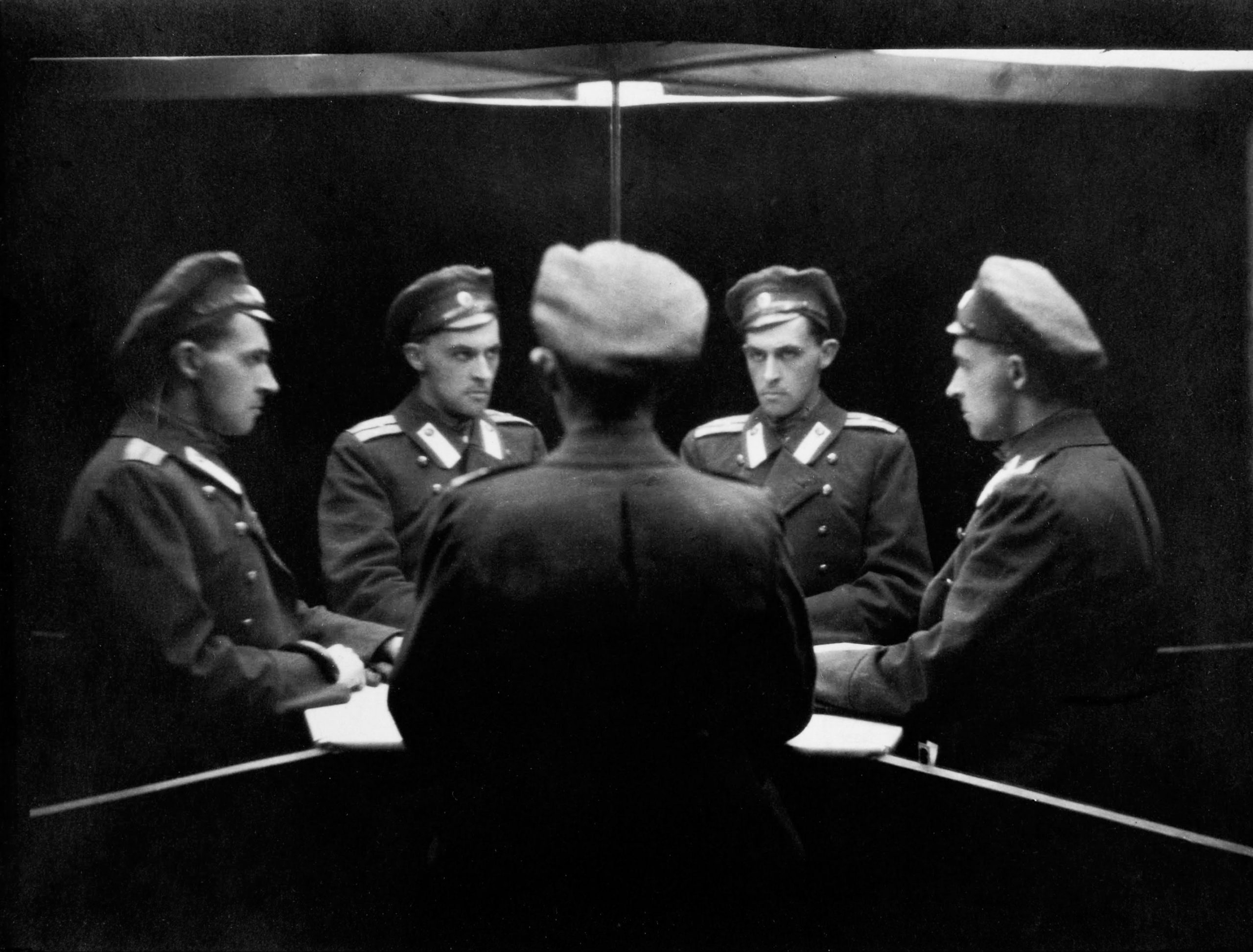
Witkacy, multiple self-portrait in mirrors, Saint Petersburg, 1915–1917
Witkacy left Russia in 1918, yet his wartime experiences and contact with the Bolsheviks were reflected in his later literary output, including Farewell to Autumn and Insatiability. He would often express mistrust towards the schemes of demagogues manipulating the minds of the masses. His intuitions proved extremely pertinent in view of the historical changes brought about by both the German Nazis and the Russian Bolsheviks.
After returning to Poland, Witkacy lived with his mother in Zakopane and joined the Polish expressionist group, shortly afterwards renamed as the formists, where his childhood friend Leon Chwistek was active.
“Formism is an attempt to create a new style, based on realism and beauty, which unfolded from the experiences of cubists, futurists and expressionists,” wrote Chwistek. He explained that formism “aspires to pure beauty and the feelings of joy and enthusiasm connected to beauty”, rejecting the trends of contemporary Western art focused on “intellectual, psychological, social and literary impressions”.
“Our forms are raw and simple. Consistency in the distribution of shapes and colours and adherence to the general principles of realism allow us to regard ourselves as a continuation of the development of great art, not as a deliberate denial of it.”
The artists active in the group shared an interest in the avant-garde theories of the time, which were seeking an autonomous language of art, freed from the need to imitate reality and to relay symbolic, patriotic contents. Witkacy’s works from this time are expressive compositions constructed from polymorphic coloured splashes with irregular black outlines. Filled with clean, usually contrasting colours.
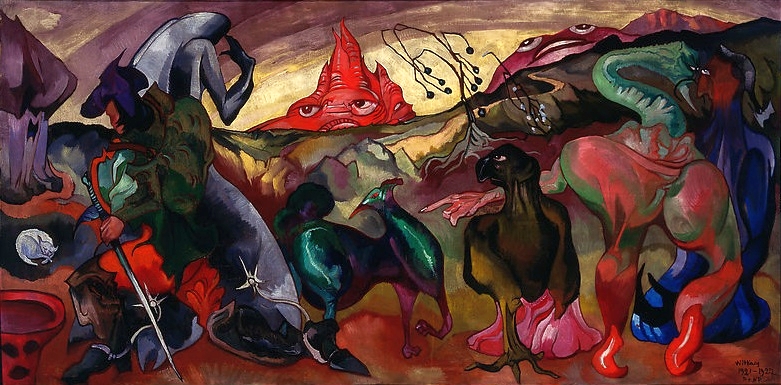
Witkacy, Fantasy. Fairytale, 1922 (National Museum, Warsaw)
Witkacy’s artist endeavours were summed up in the book New Forms in Painting and the Resulting Misunderstandings, published in 1919. In it, he published his theory of Pure Form, the premises of which he had previously applied in his art.
“We live in a frightful epoch, the likes of which the history of humanity has never known until now, and which is so camouflaged by certain ideas that man nowadays has no knowledge of himself; he is born, lives, and dies in the midst of lying and does not know the depth of his degeneration.”
“For people nowadays, the forms of the Art of the past are too placid, they do not excite their deadened nerves to the point of vibration. They need something that will rapidly and powerfully shock their blasé nervous system and act as a stimulating shower after long hours of stupefying mechanical work.”
His final oil painting made under the principles of Pure Form is believed to be Self-portrait (Convict’s Last Cigarette) from 1924.
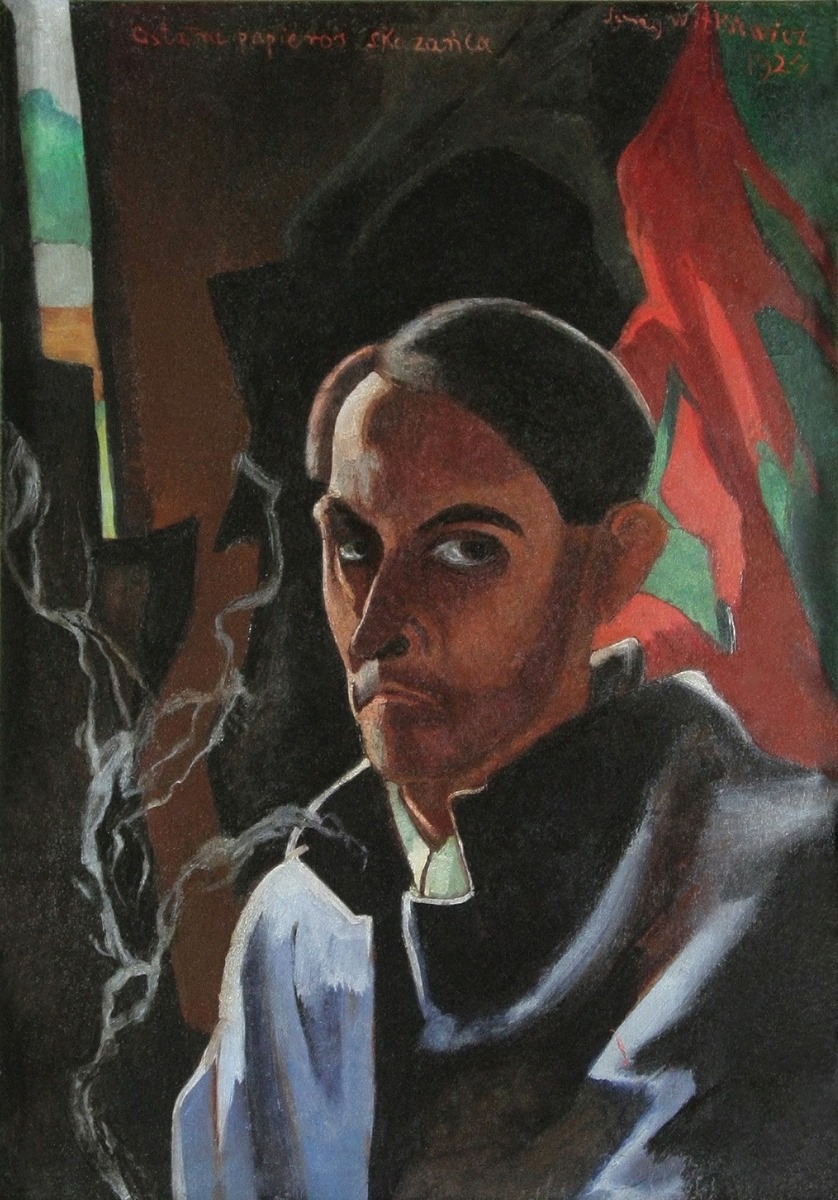
Witkacy, self-portrait (Convict’s Last Cigarette), 1924
He was also becoming more active commercially at this time, setting up his “Portrait Firm”, with a list of regulations and a price list divided into five types of portraits marked A to E. The most expensive was type A (350 zloty), which the artist himself described as the “sleekest”, clearly beautified version. The next types were cheaper, less idealised, and, starting from type C, produced under the influence of substances.
The artist often recorded which substances he had taken – “alcohol, beer, nicotine, coffee”, even nose drops, as well as narcotics: cocaine, peyote, mescaline, and hashish. The diverse types of portraits described in the regulations can clearly be seen in the painting Deception of Woman, with Self-portrait (Portrait of Maryla Grossmanowa) from 1927. The model is presented twice – semi-reclining while posing for Witkacy (type A), who is sketching her slightly demonic portrait (type D).
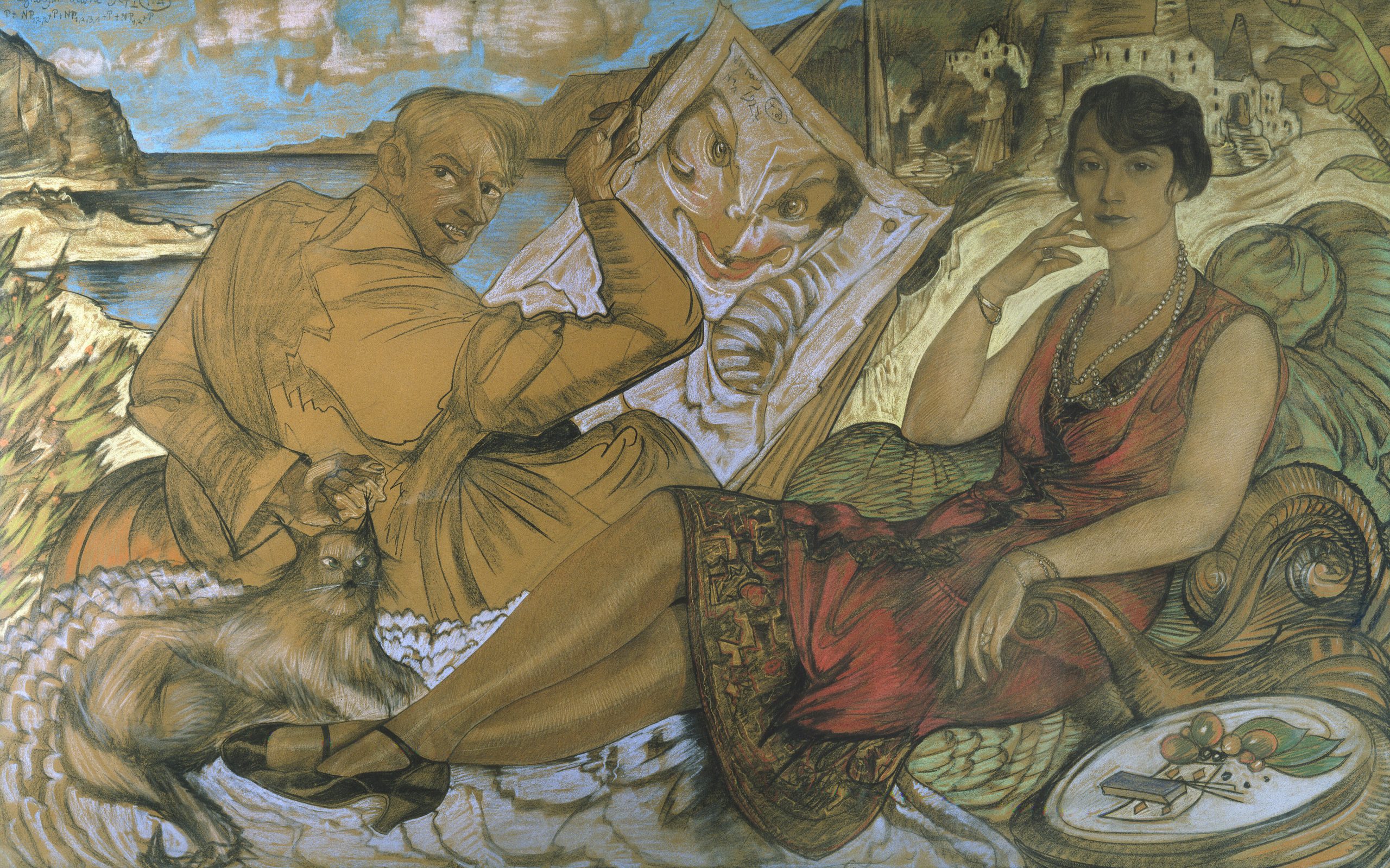
Witkacy, Deception of woman, with self-portrait, 1927
The artist’s cocaine use was overseen by his doctor, Teodor Białynicki-Birula, who also supplied the drug. The doctor often took payment in the form of artworks, produced during portrait sessions featuring Witkacy’s friends. He thus became the owner of over 300 works that later entered the collection of the Museum of Central Pomerania in Słupsk.
Witkacy’s drawings produced during experimental sessions concerning the influence of narcotics on artistic visions are also extremely interesting – the artist particularly appreciated the effects of peyote. He described his experiences and observations on the influence of addictions on artistic expression in Narcotics, or Nicotine Alcohol Cocaine Peyote Morphine Ether + Appendix, published in 1932.
Stanisław Ignacy Witkiewicz aka #Witkacy, Polish artist of the 1920s, created brilliant portraits of the people of his time. These invaluable works each list all chemical enhancers the artist took before a session with the client;-)
(#Słupsk's Pomeranian Dukes Castle & museum) pic.twitter.com/q9ZGK857Gh— BerlinCompanion (@kreuzberged) February 8, 2019
“Insofar as alcohol and cocaine might be called ‘realistic intoxicants’, amplifying the world without lending it a veneer of the uncanny, I would call peyote a metaphysical narcotic,” the artist wrote.
“It gives a sense of the strangeness of Being seldom experienced in everyday life – alone in the mountains, late at night, at times of great intellectual exhaustion, sometimes at the sight of something very beautiful, or when listening to music, for this is not just a normal metaphysical-artistic sensation from directly apprehending the Pure Form of a work of art.”
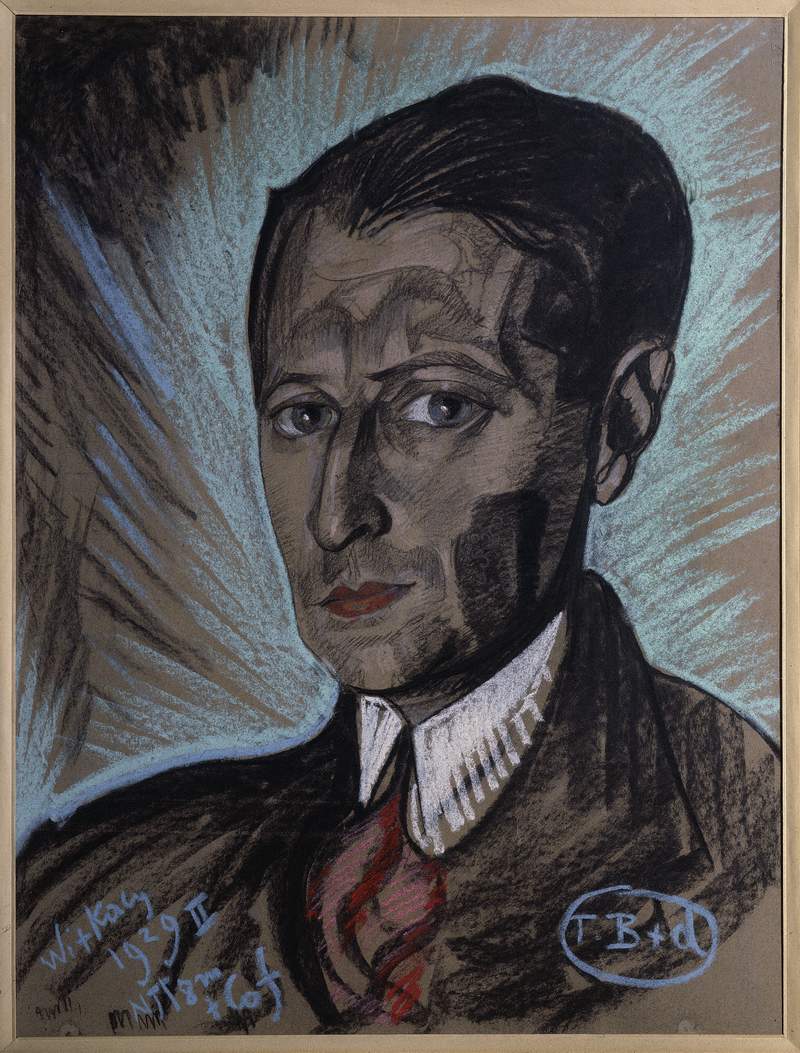
Witkacy, portrait of Julian Tuwim (National Museum, Warsaw)
At the same time, Witkacy was developing his literary and play-writing activity – in 1925 he was one of the founders of the Theatrical Society in Zakopane, which opened with a premiere of his The Madman and the Nun. Yet the rather avant-garde stage design and contents of his plays were not well received among the residents of the health spa, and he stopped working with the society and opened the Formist Theatre.
Witkacy also began to achieve notable successes as a dramatist – his plays were put on in Warsaw, Lwów (Lviv), Łódź and Kraków – while his paintings were displayed at nationwide exhibitions. He also pursued his interests in philosophy and psychology, and this too was reflected in his writing.
He held the German philosopher Hans Cornelius in particular high esteem, seeing him as his master, while his acquaintances also included other renowned philosophers including Roman Ingarden, Kazimierz Ajdukiewicz and Tadeusz Kotarbiński. Witkacy himself gave lectures at philosophical societies and conferences.
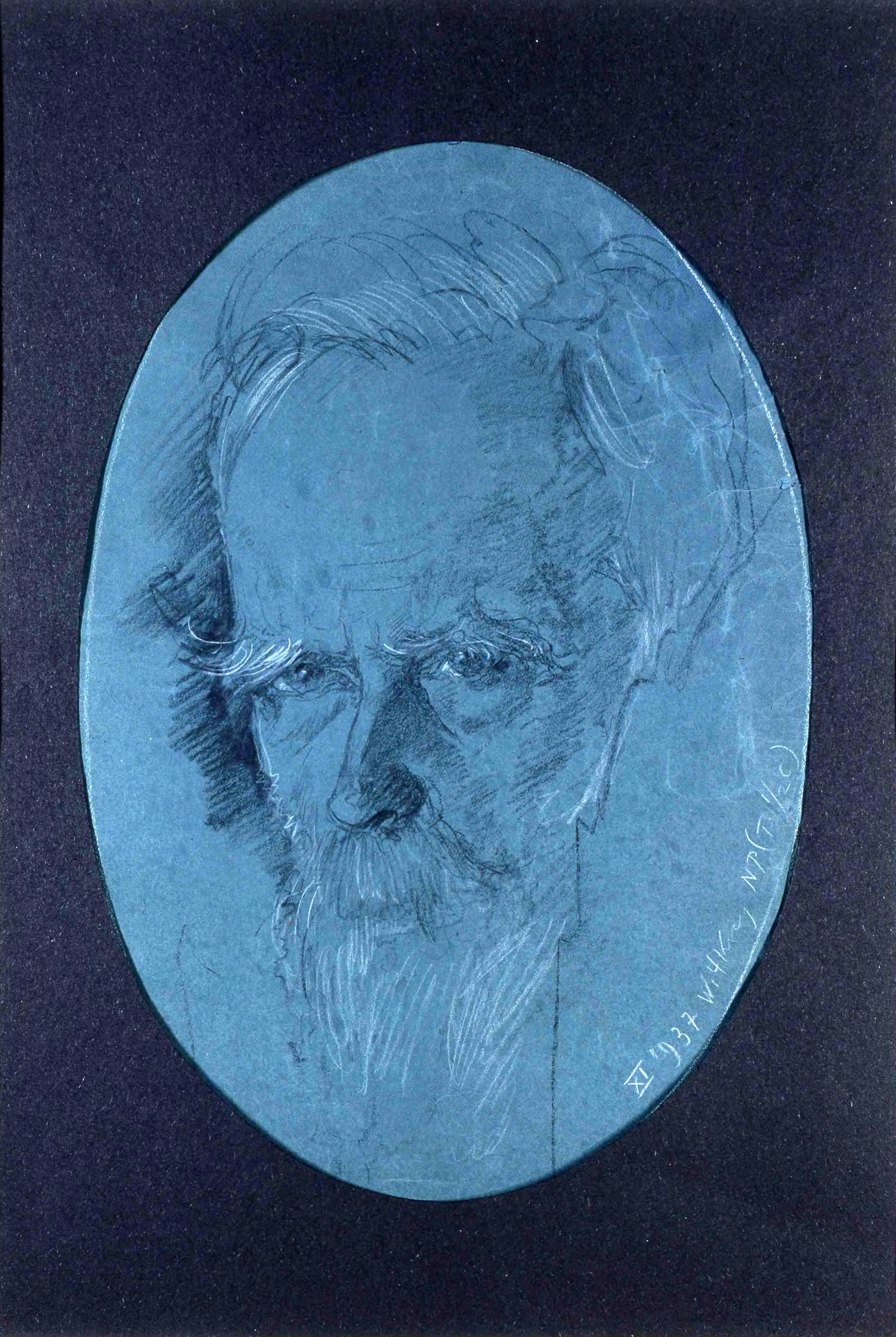
Witkacy, portrait of Hans Cornelius, 1937
Notwithstanding his extremely creative activities and their diversity, Witkacy could not shake off the depression that overcame him. He wrote to friends and his wide about his disillusionment with life and suicidal thoughts.
“Life is too short,/Time bereft,/Everything so small, /Nothing is left.”
He had a succession of affairs, the longest-lasting and most tempestuous being with Czesława Oknińska, 17 years his junior. She was his companion during a visit to the estate of Walenty Ziemlański in the village of Jeziory, now in Ukraine, in September 1939. Upon hearing about the Soviet Union’s invasion of Poland, on 18 September Witkacy and his lover attempted suicide – only he was successful.
The artist’s body was buried at the local cemetery, where it still lies today. In April 1988, his supposed remains were brought back to Poland and buried at the Old Cemetery in Zakopane. But this ended in scandal, as a later exhumation showed that the body was actually that of a young woman.
Dziś urodziny Jadwigi z Unrugów Witkiewiczowej, żony Stanisława Ignacego Witkiewicza – Witkacego. #pamiętamy pic.twitter.com/B5IKZKxKLn
— Instytut Witkacego (@WitkacyInstytut) August 24, 2018
The artist’s legacy was handled by his wife, Jadwiga Witkiewiczowa, the granddaughter of the painter Juliusz Kossak. The couple married in 1923 and, though in practice the marriage was over within two years, never divorced. They remained friendly and corresponded extensively, with the artist describing his woes, including those caused by his affairs. Jadwiga managed to preserve their letters from the horrors of war.
“My dearest Nineczka: if you want to forcefully turn everything around to a hundred thousand syphilitic ducks, there is nothing I can do. After eight years of marriage certain feelings must wane, so then – as long as there is no tolerance, only the ‘sexual compulsion’ – husbands abandon life, go insane or leave their wives and get married. I love you,” he wrote to her two years before his death.
The exhibition at the National Museum in Warsaw examines Witkacy’s significance against the background of the era he was working in. The museum has one of the largest collections of the artist’s works, representing all periods of his career. These are supplemented in the exhibition by works from Polish public and private collections. Almost 500 works will be juxtaposed with the visions of his contemporaries, Wassily Kandinsky, Max Ernst, Rudolf Schlichter, Umberto Boccioni and Marcel Duchamp.
Translated by Ben Koschalka
Main image credit: Muzeum Pałac w Wilanowie/materiały prasowe
